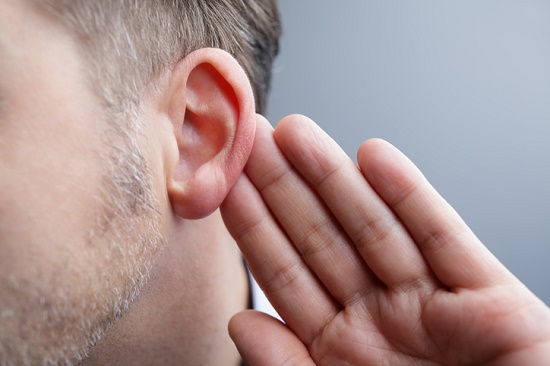
Your odds of developing hearing loss at some point in your life are regrettably very high, even more so as you grow older. In the US, 48 million people report some degree of hearing loss, including almost two-thirds of adults age 70 and older.
That’s why it’s critical to understand hearing loss, so that you can recognize the symptoms and take precautionary measures to avoid injury to your hearing. In this article, we’re going to focus on the most widespread type of hearing loss: sensorineural hearing loss.
The three types of hearing loss
Generally speaking, there are three forms of hearing loss:
- Conductive hearing loss
- Sensorineural hearing loss
- Mixed hearing loss (a mix of sensorineural and conductive)
Conductive hearing loss is less common and is caused by some kind of obstruction in the outer or middle ear. Frequent causes of conductive hearing loss include ear infections, perforated eardrums, benign tumors, impacted earwax, and genetic malformations of the ear.
However, sensorineural hearing loss is far more common.
Sensorineural hearing loss
This form of hearing loss is the most common and accounts for about 90 percent of all reported hearing loss. It is triggered by damage to the hair cells (the nerves of hearing) of the inner ear or to the nerves running from the inner ear to the brain.
With sensorineural hearing loss, sound waves enter the external ear, strike the eardrum, and arrive at the inner ear (the cochlea and hair cells) as normal. However, because of damage to the hair cells (the very small nerve cells of hearing), the sound signal that is transmitted to the brain for processing is weakened.
This diminished signal is perceived as muffled or faint and normally affects speech more than other kinds of lower-pitched sounds. Also, contrary to conductive hearing loss, sensorineural hearing loss is typically permanent and cannot be corrected with medication or surgery.
Causes and symptoms
Sensorineural hearing loss has multiple possible causes, including:
- Genetic disorders
- Family history of hearing loss
- Meniere’s Disease or other disorders
- Head injuries
- Benign tumors
- Direct exposure to loud noise
- Aging (presbycusis)
The last two, direct exposure to loud noise and aging, account for the most frequent causes of sensorineural hearing loss, which is actually good news as it shows that the majority of cases of hearing loss can be prevented (you can’t prevent aging, of course, but you can regulate the collective exposure to sound over the course of your lifetime).
To fully understand the signs and symptoms of sensorineural hearing loss, you should bear in mind that damage to the nerve cells of hearing almost always unfolds very gradually. Therefore, the symptoms advance so slowly that it can be near impossible to perceive.
A slight measure of hearing loss every year will not be very recognizable to you, but after a number of years it will be very noticeable to your family and friends. So although you might believe everybody is mumbling, it could very well be that your hearing loss is catching up to you.
Here are a few of the symptoms to look for:
- Trouble understanding speech
- Problems following conversions, particularly with more than one person
- Turning up the TV and radio volume to excess levels
- Constantly asking other people to repeat themselves
- Perceiving muffled sounds or ringing in the ears (tinnitus)
- Feeling excessively tired at the end of the day
If you recognize any of these symptoms, or have had people inform you that you may have hearing loss, it’s best to arrange a hearing test. Hearing tests are fast and painless, and the sooner you treat your hearing loss the more hearing you’ll be able to conserve.
Prevention and treatment
Sensorineural hearing loss is mostly preventable, which is good news because it is by far the most common form of hearing loss. Millions of cases of hearing loss in the United States could be avoided by implementing some simple precautionary measures.
Any sound above 80 decibels (the volume of city traffic inside your car) can potentially harm your hearing with sustained exposure.
As the decibel level increases, the amount of time of safe exposure decreases. That means at 100 decibels (the volume of a rock concert), any exposure over 15 minutes could harm your hearing.
Here are some tips on how you can prevent hearing loss:
- Use the 60/60 rule – when listening to a portable music player through headphones, listen for no more than 60 minutes at no more than 60 percent of the maximum volume. Additionally, think about investing in noise-canceling headphones, as these will require lower volumes.
- Safeguard your ears at concerts – concerts can vary from 100-120 decibels, significantly above the threshold of safe volume (you could damage your hearing within 15 minutes). Minimize the volume with the aid of foam earplugs or with musician’s plugs that maintain the quality of the music.
- Protect your ears in the workplace – if you work in a loud occupation, talk with your employer about its hearing protection program.
- Protect your hearing at home – a variety of household and leisure activities produce high-decibel sounds, including power saws, motorcycles, and firework displays. Make sure that you always use ear protection during extended exposure.
If you currently have hearing loss, all hope is not lost. Hearing aids, while not able to completely restore your hearing, can significantly improve your life. Hearing aids can improve your conversations and relationships and can prevent any additional consequences of hearing loss.
If you think you might have sensorineural hearing loss, book your quick and easy hearing test today!

